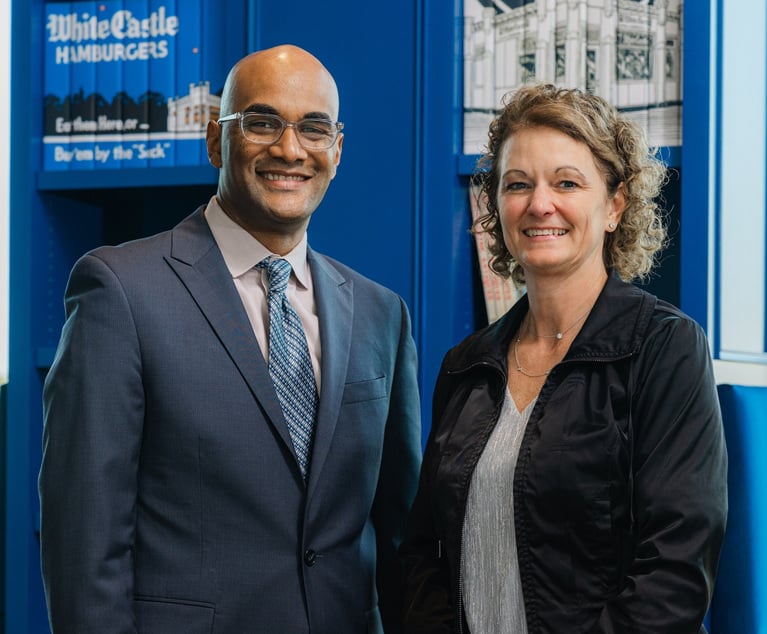Facts & Figures: 5 sets of newsworthy data
An inside look at the numbers that count
May 11, 2012 at 05:35 AM
4 minute read
The original version of this story was published on Law.com

Shrinking Spending
In-house lawyers foresee an increase in class action litigation this year, but they don't expect the trend to break the bank. In fact, many companies intend to spend less money defending class action cases, according to a new study by law firm Carlton Fields.
Respondents plan to accomplish this apparently incongruous goal by relying more heavily on alternative fee agreements.
5.4 Class action matters that the average legal department will handle in 2012, up from 4.4 in 2011
$645,000 Amount that firms plan to spend per class action in 2012, down 17 percent from last year
$1.89 billion Projected 2012 U.S. legal spend on class actions, the lowest total since 2006

Public Perceptions
It isn't as unpopular as the executive or legislative branches, but the Supreme Court evidently hasn't escaped the American public's disdain for government. Public opinion of the court is at its lowest point in 25 years, according to a new survey from the Pew Research Center for the People & the Press.
52% Respondents with a favorable opinion of the Supreme Court, down from 58 percent in 2010
29% Respondents with an unfavorable view of the court, one point off 2005's all-time high
56% Republicans with favorable views of the court, down from 70 percent in 2009
52% Democrats with favorable views of the court, down from 63 percent in 2009
52% Independents with favorable views of the court, down from 64 percent in 2009

Tempting Technology
Judge Peck's recent decision in Da Silva Moore v. Publicis Groupe et al. has put technology-assisted review (TAR) in the spotlight. Now a recently released study by the eDJ Group shows that many law firms are interested in pursuing or increasing TAR use, specifically predictive coding.
36.8% Law firms that currently use predictive coding
35.8% Firms that do not use predictive coding, but plan to start within the next year
87.9% Businesses already using predictive coding that plan to increase their usage
68.4% Respondents who think predictive coding is defensible
34% Respondents who would be comfortable using predictive coding without linear review (though 48 percent would be uneasy)
This content has been archived. It is available through our partners, LexisNexis® and Bloomberg Law.
To view this content, please continue to their sites.
Not a Lexis Subscriber?
Subscribe Now
Not a Bloomberg Law Subscriber?
Subscribe Now
NOT FOR REPRINT
© 2025 ALM Global, LLC, All Rights Reserved. Request academic re-use from www.copyright.com. All other uses, submit a request to [email protected]. For more information visit Asset & Logo Licensing.
You Might Like
View All
Private Equity-Backed Medical Imaging Chain Hires CLO, Continuing C-Suite Makeover

White Castle GC Becomes Chain's First President From Outside Family
Trending Stories
- 1US DOJ Threatens to Prosecute Local Officials Who Don't Aid Immigration Enforcement
- 2Kirkland Is Entering a New Market. Will Its Rates Get a Warm Welcome?
- 3African Law Firm Investigated Over ‘AI-Generated’ Case References
- 4Gen AI and Associate Legal Writing: Davis Wright Tremaine's New Training Model
- 5Departing Attorneys Sue Their Former Law Firm
Who Got The Work
J. Brugh Lower of Gibbons has entered an appearance for industrial equipment supplier Devco Corporation in a pending trademark infringement lawsuit. The suit, accusing the defendant of selling knock-off Graco products, was filed Dec. 18 in New Jersey District Court by Rivkin Radler on behalf of Graco Inc. and Graco Minnesota. The case, assigned to U.S. District Judge Zahid N. Quraishi, is 3:24-cv-11294, Graco Inc. et al v. Devco Corporation.
Who Got The Work
Rebecca Maller-Stein and Kent A. Yalowitz of Arnold & Porter Kaye Scholer have entered their appearances for Hanaco Venture Capital and its executives, Lior Prosor and David Frankel, in a pending securities lawsuit. The action, filed on Dec. 24 in New York Southern District Court by Zell, Aron & Co. on behalf of Goldeneye Advisors, accuses the defendants of negligently and fraudulently managing the plaintiff's $1 million investment. The case, assigned to U.S. District Judge Vernon S. Broderick, is 1:24-cv-09918, Goldeneye Advisors, LLC v. Hanaco Venture Capital, Ltd. et al.
Who Got The Work
Attorneys from A&O Shearman has stepped in as defense counsel for Toronto-Dominion Bank and other defendants in a pending securities class action. The suit, filed Dec. 11 in New York Southern District Court by Bleichmar Fonti & Auld, accuses the defendants of concealing the bank's 'pervasive' deficiencies in regards to its compliance with the Bank Secrecy Act and the quality of its anti-money laundering controls. The case, assigned to U.S. District Judge Arun Subramanian, is 1:24-cv-09445, Gonzalez v. The Toronto-Dominion Bank et al.
Who Got The Work
Crown Castle International, a Pennsylvania company providing shared communications infrastructure, has turned to Luke D. Wolf of Gordon Rees Scully Mansukhani to fend off a pending breach-of-contract lawsuit. The court action, filed Nov. 25 in Michigan Eastern District Court by Hooper Hathaway PC on behalf of The Town Residences LLC, accuses Crown Castle of failing to transfer approximately $30,000 in utility payments from T-Mobile in breach of a roof-top lease and assignment agreement. The case, assigned to U.S. District Judge Susan K. Declercq, is 2:24-cv-13131, The Town Residences LLC v. T-Mobile US, Inc. et al.
Who Got The Work
Wilfred P. Coronato and Daniel M. Schwartz of McCarter & English have stepped in as defense counsel to Electrolux Home Products Inc. in a pending product liability lawsuit. The court action, filed Nov. 26 in New York Eastern District Court by Poulos Lopiccolo PC and Nagel Rice LLP on behalf of David Stern, alleges that the defendant's refrigerators’ drawers and shelving repeatedly break and fall apart within months after purchase. The case, assigned to U.S. District Judge Joan M. Azrack, is 2:24-cv-08204, Stern v. Electrolux Home Products, Inc.
Featured Firms
Law Offices of Gary Martin Hays & Associates, P.C.
(470) 294-1674
Law Offices of Mark E. Salomone
(857) 444-6468
Smith & Hassler
(713) 739-1250








